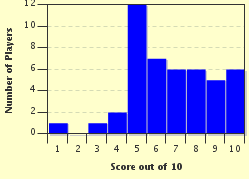Quiz Answer Key and Fun Facts
1. Cologne was first settled by the Ubii tribe who had been given permission to live there by which Roman general in 39 BC?
2. The 716 Battle of Cologne during the Frankish Civil War was the only military defeat of which Frankish ruler and grandfather of Charlemagne?
3. Henry the Fowler took Cologne (along with Lorraine) from which country in the 920s, making it part of the Holy Roman Empire? Today, Lorraine is again part of this country?
4. Which of the following is NOT true regarding the Cologne Cathedral which began construction in 1248?
5. Cologne became a free city after the 1288 Battle of Worringen after which person was stripped of most of his political power in Cologne?
6. The sizeable Jewish population in Cologne was expelled from the city in 1424 and their temporary citizenship was not renewed as the Jews were blamed for what?
7. Which of the following best describes the kind of war that the Cologne War of 1583-1588 was?
8. What is the name of Germany's first female postmaster who was burned as a witch in 1627?
9. Even though Cologne was strongly Catholic in the 1930s, the Nazi Party was able to comfortably win elections there in 1933.
10. Which building collapsed in Cologne on March 3, 2009 during the expansion of the underground railway?
Source: Author
Joepetz
This quiz was reviewed by FunTrivia editor
bloomsby before going online.
Any errors found in FunTrivia content are routinely corrected through our feedback system.
